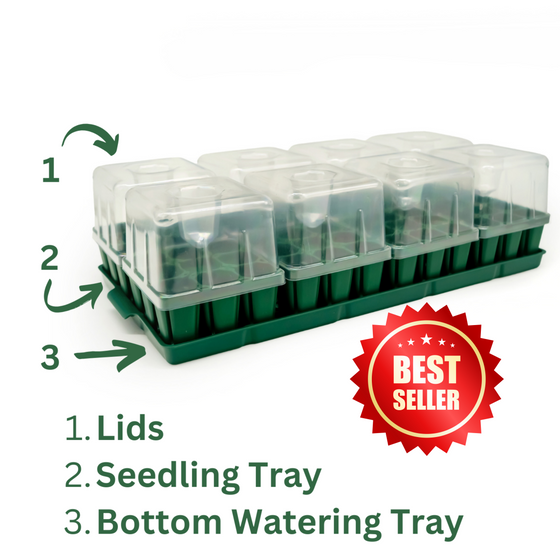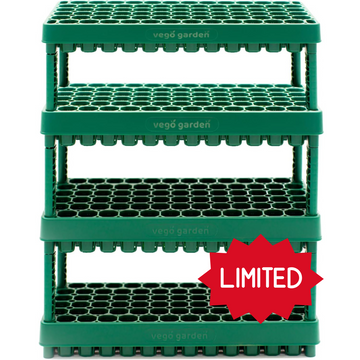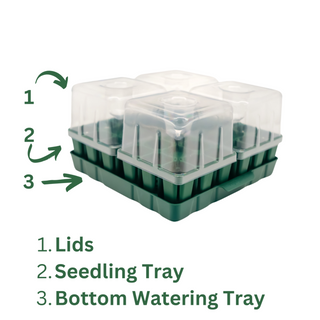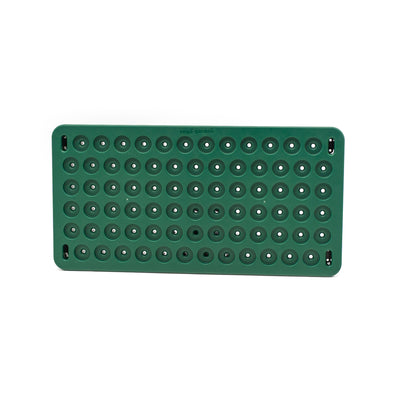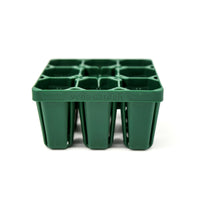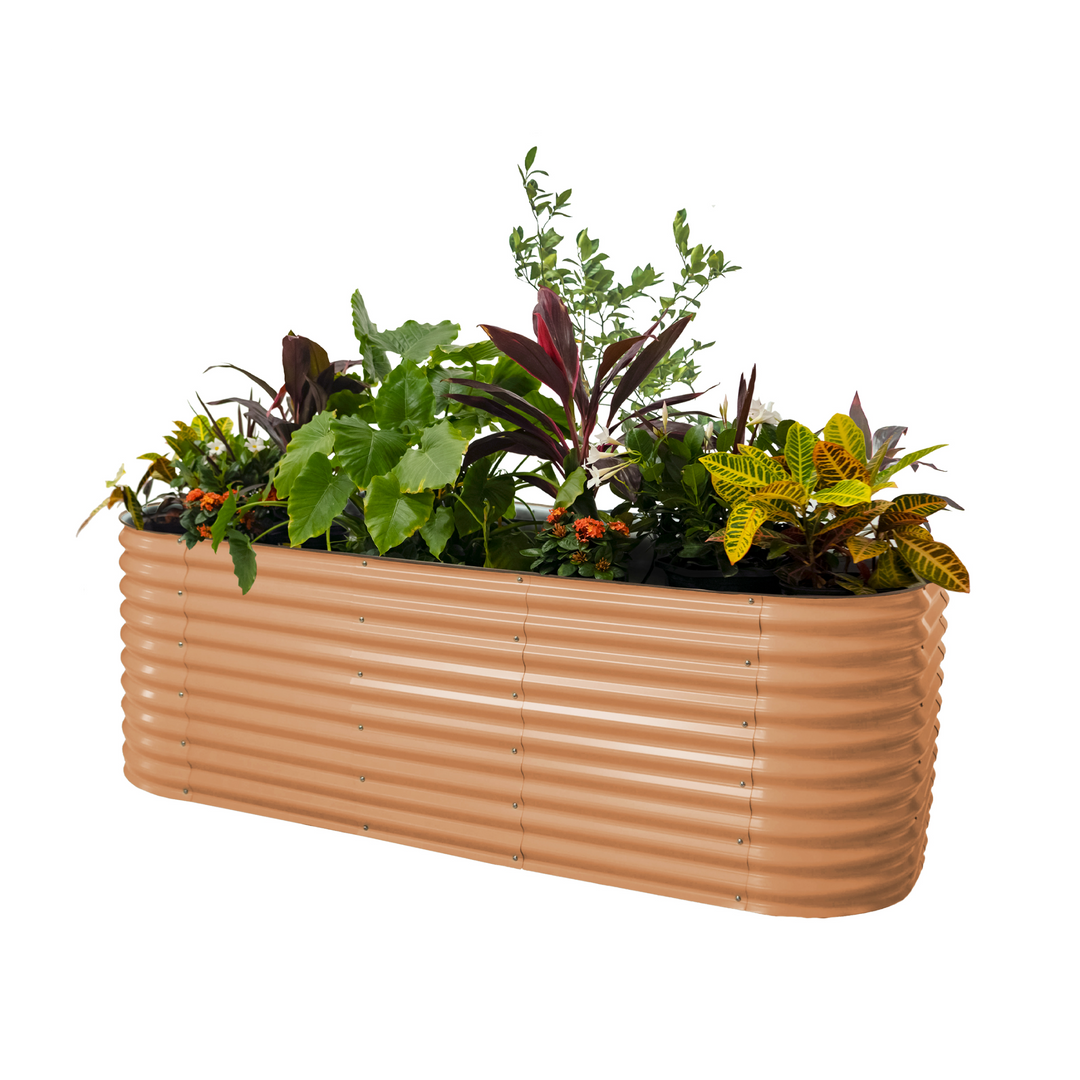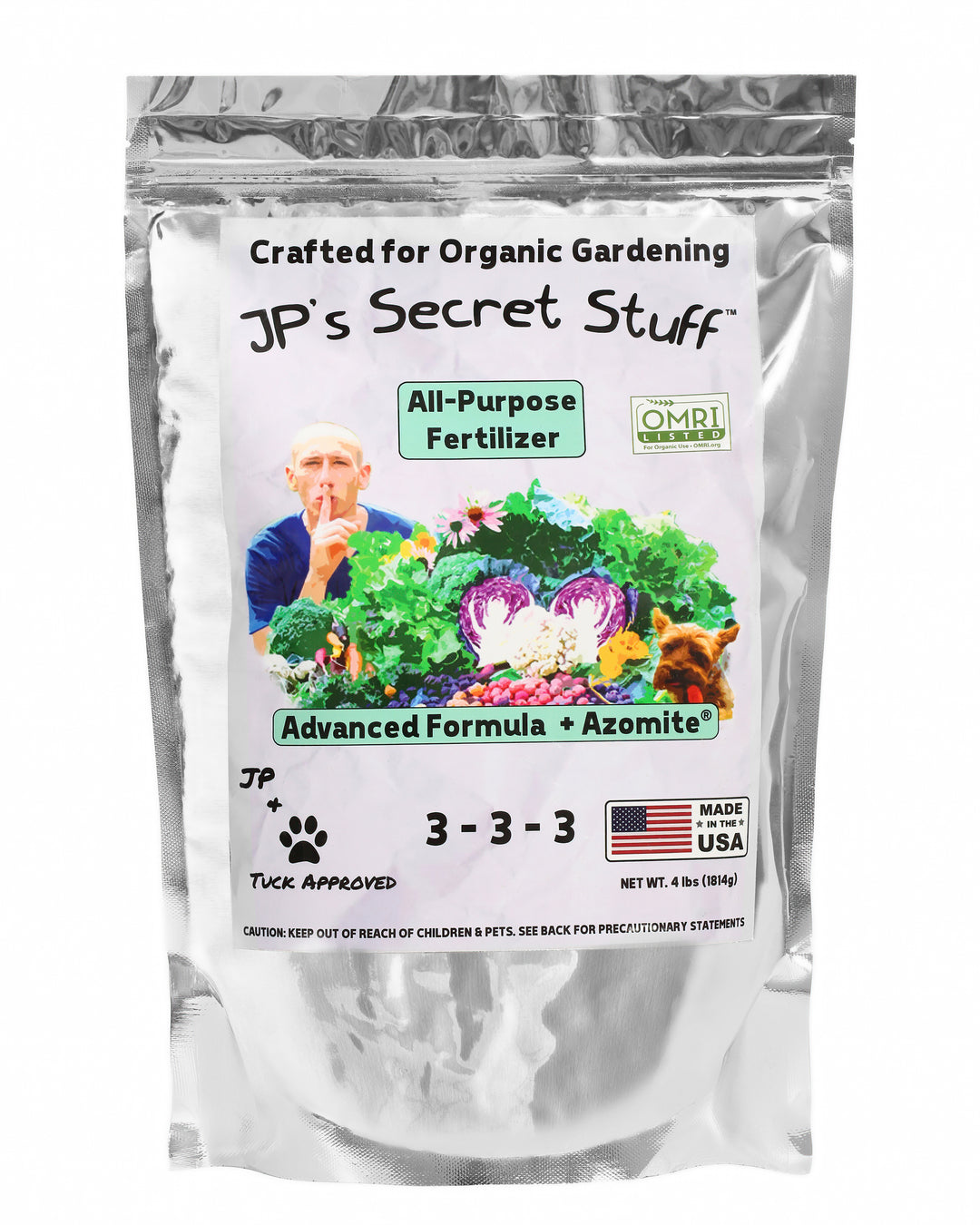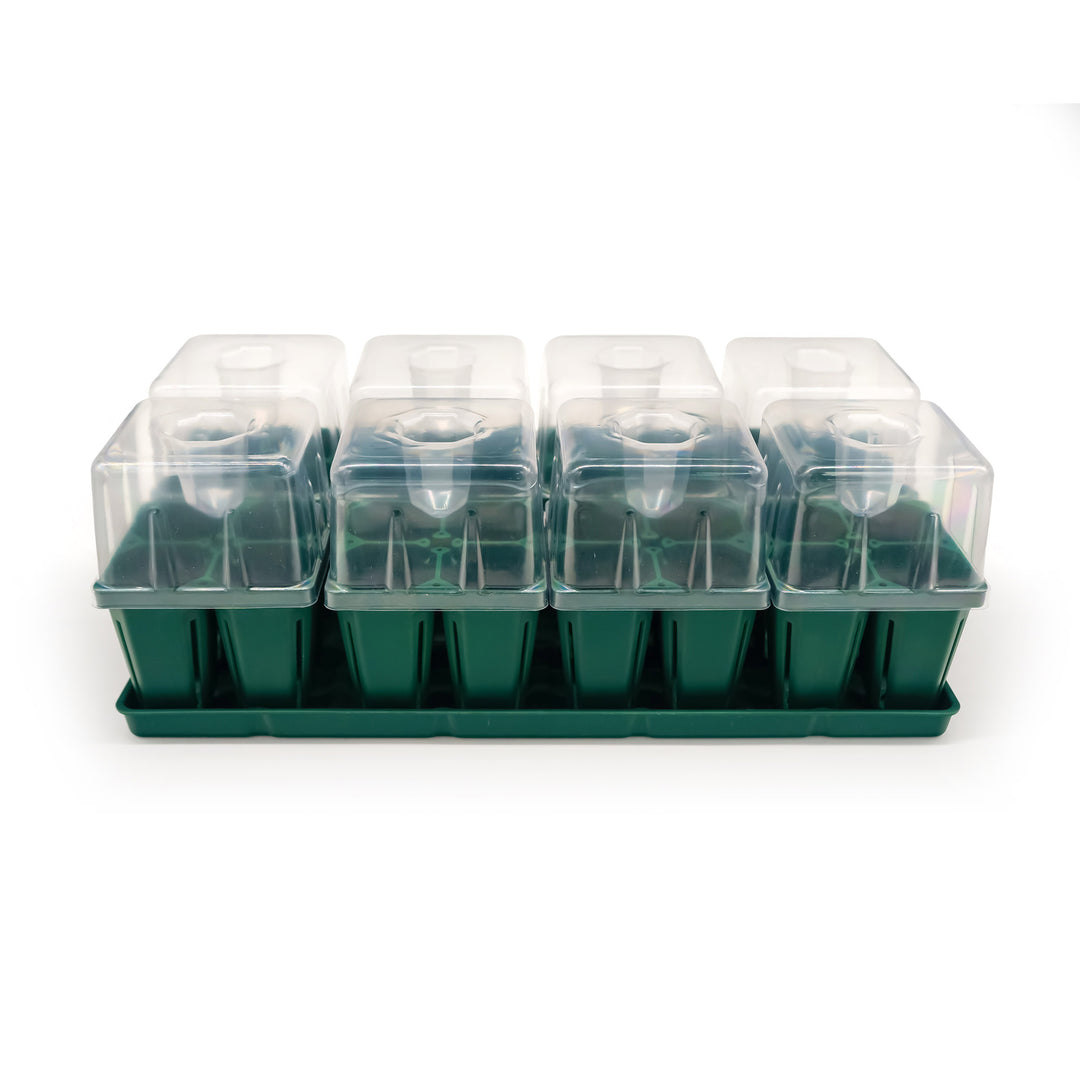March Planting Guide: Bigger Harvest's Start NOW!
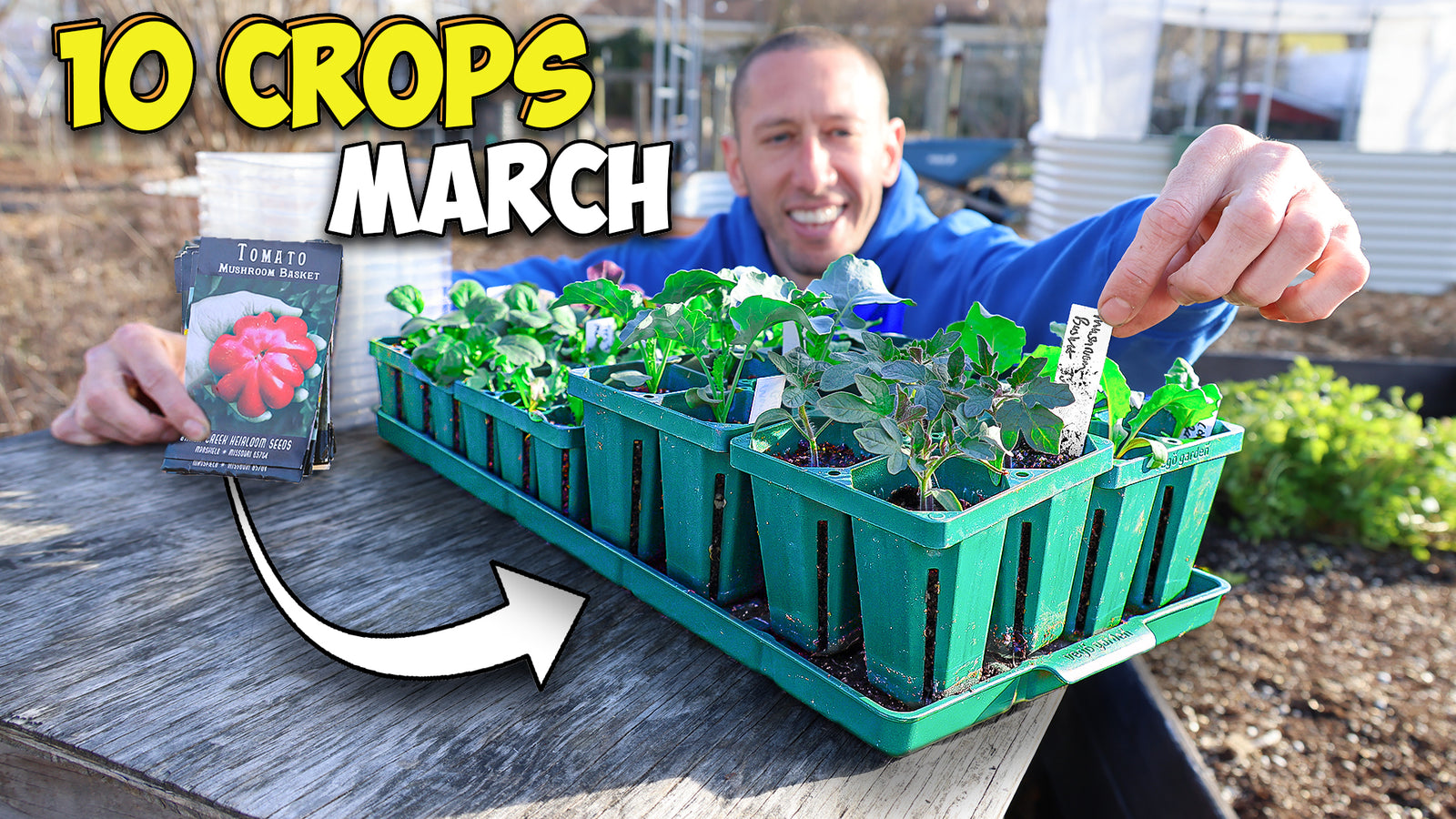
March Planting Guide
Hey there, Team Growers! It's James and Tuck here, and boy, do we have an exciting journey ahead of us! March is upon us, and it's a gardener's delight. This is the time when our gardens come alive with potential and promise. Today, we'll dive into the beautiful world of March planting - a pivotal time to set the stage for a bountiful and beautiful growing season.
This guide will share ten fantastic crops you can start planting in March. Whether you're a seasoned gardener or just getting your hands dirty for the first time, there's something here for everyone. From the all-time favorite tomatoes to the robust and resilient Swiss chard, we're covering a variety of crops that thrive in this season's unique conditions.
So, get ready to get those green thumbs working because we're about to embark on a planting adventure to set you up for a productive summer. Let's go; let's jump right into what to plant, how to plant it, and all the tips and tricks to make your March growing a success!
Remember, gardening is not just about growing plants; it's about increasing possibilities. And with March's versatile planting options, the possibilities are indeed endless. So, stick with us as we guide you through each crop, and let's make this March planting season your best yet!
Stay tuned for the next section, where we'll delve into the first of our ten crops to plant in March - the incomparable tomato. You will want to take advantage of the insights and tips we have for you!
Tomatoes: The All-Time Favorite 🍅
Whether it's the sweetness of cherry tomatoes, the heft of beefsteaks, or the array of colors and flavors from yellow, pink, orange, and striped varieties, tomatoes are a must-have in any garden.
The Perfect Time to Plant
March is ideal for getting your tomato seeds into the soil and setting them up for a productive summer. In zone 7A, like our garden, tomato seeds only need about 6 to 8 days to germinate when the soil temperature is between 75 and 90°F.
Germination Tips for Success
- Optimal Soil Temperature: Tomatoes are picky about their germination temperature. If the soil is cooler, waking up can take a long time. That's why we recommend using a heat mat. It's like a warm hug for your seeds, ensuring quick and effective germination.
- Moisture and Airflow: Cover your seeds lightly after planting them and give them good water. To maintain ideal moisture and prevent fungal issues, cover your seed tray with a humidity dome and remember to let it breathe every day or so.
- Recycling for Germination: You can get creative with egg cartons, upcycling them into mini greenhouses for your tomato seeds. They're perfect for keeping those little seedlings snug until they sprout two true leaves. For extra protection, especially on chilly nights, a clear gallon jug can be turned into a mini greenhouse to safeguard your young tomato plants.
Preparing for Rapid Growth
Tomatoes don't just grow; they explode into growth! Ensure you have ample space for their foliage and roots. Be it a greenhouse or an indoor grow light setup, be prepared. You want to avoid your tomatoes getting root-bound and flowering before the warm summer days arrive.
Consistent Watering and Calcium Boost
Consistent watering is crucial to prevent blossom end rot, a common issue with tomatoes. A little trick is to add crushed eggshells around your tomato plants during transplanting. This boosts calcium and keeps your tomatoes healthy and happy.

Brassicas: A Must-Plant Group
Budding up next is the beautiful world of brassicas – the awesome veggies like cauliflower, cabbage, broccoli, kale, and Brussels sprouts. These guys are not just packed with nutrients but are also superstars in the garden, especially when it comes to germination.
Now, let's talk brassicas. These beauties are surprisingly easy to germinate. You want to start them off in an excellent seed-starting mix, ensuring it’s moist but not soggy. The key here is consistency. Brassicas love a steady environment, so aim for a germination temperature around 65-75°F (18-24°C). I’ve found that they pop up best in these conditions.
Once they sprout, it’s all about light and temperature management. These seedlings crave light, so make sure they get plenty of it – a sunny windowsill or a grow light will do the trick. Once they've germinated, keep them at a cooler temperature, around 60°F (15°C). This helps them grow strong and sturdy, not leggy and weak.
Remember, brassicas are a diverse group, and each has its little quirks, but generally, they all follow this simple rule of thumb. So, whether you're planting kale for those crisp, healthy chips or growing broccoli for a tasty garden-to-table meal, you're in for a treat with these guys. Happy planting, and let's get those brassicas growing! 🌱🥦🥬👩🌾🐾

Planting Lettuce - A Breeze for Every Gardener
Lettuce is one of the speediest and most satisfying crops you can grow in your garden! Lettuce is a fantastic choice for any gardener looking to add a splash of color and a fresh crunch to their salads. It's super easy to grow, and you'll be amazed at how quickly it sprouts and matures.
Lettuce seeds are some of the easiest to start. You don't need to bury them deep in the soil; a light surface sowing will do the trick. Just sprinkle the seeds on top of your soil mix, gently pat them to ensure good seed-to-soil contact, and that's it! Lettuce loves light to germinate, so don't cover them with more soil.
Ideal Germination Conditions
Lettuce is a cool-weather crop, but it needs a bit of warmth for those seeds to wake up. A temperature range of 60-70°F (15-21°C) is perfect. If you're starting seeds indoors, using a heat mat can speed up germination, especially if your house runs a bit cool. Lettuce also requires lights, so be sure to keep them on the near-surface of the soil, just barely covered if it is all.
Keep the Soil Moist But Not Soaked
Lettuce seeds need consistent moisture to germinate. Make sure your seed-starting mix stays damp but not waterlogged. A simple spray bottle can be your best friend here. Lightly mist the soil to keep it moist until those little green shoots appear.
From Seed to Salad in No Time!
One of the best things about lettuce is how quickly it grows. You'll see sprouts in just a few days; in a few weeks, you'll harvest fresh lettuce. You can do a 'cut and come again' harvest - snip off what you need and keep the plant growing for a continuous supply.
Variety is the Spice of Life
Don't just stick to one type! There's a whole world of lettuce – romaine, leaf lettuce, butterhead, and more. Each has its own unique texture and flavor. Mix and match for colorful, tasty salads all season long.🌱🐾

Flowers for Pollinators and Companions: Borage, Marigolds, and Chamomile
Let’s dive into borage, marigolds, and chamomile, which bring life and color to your garden and offer many benefits.
Borage: The Starflower Powerhouse
- Planting Time: Start your borage seeds indoors in March. They're straightforward to grow.
- Benefits: Borage is a fantastic companion plant, especially for tomatoes and strawberries. It's known to repel unwanted pests and can improve the flavor and growth of your veggies.
- Starting Tips: Sow the seeds about ¼ inch deep in well-draining soil. Borage prefers full sun but can tolerate partial shade.
Marigolds: The Golden Guardian
- Planting Time: Marigold seeds can be started indoors in March. They're quick to germinate and easy to handle.
- Benefits: These golden beauties are excellent at deterring pests like nematodes. Plant them around your garden to create a natural pest barrier.
- Starting Tips: Plant the seeds about an inch apart and barely cover them with soil. Marigolds love the sun, so make sure they get plenty of it.
Chamomile: The Gentle Healer
- Planting Time: Chamomile seeds are tiny, so start them indoors in March by scattering them on top of the soil.
- Benefits: It's not just for tea! Chamomile helps nearby plants by enhancing their growth and health, acting as a natural healer.
- Starting Tips: Don't cover the seeds; they need light to germinate. Water them gently and keep the soil moist.
Remember, these flowers support your vegetable garden and attract beneficial pollinators. Plus, they add a splash of color and charm to your space. Happy planting! 🌸🌱🐝

Herbs: Flavorful Additions to the Garden
Today, we're focusing on our all-time favorites: basil and cilantro. These aren't just your regular kitchen herbs; they're game-changers in the garden, especially when planted alongside tomatoes. Let's dig into the world of these flavorful additions and get those green thumbs working!
Basil: The Aromatic Champion
First up, basil! This herb is not just about flavor; it's about creating an environment where your tomatoes can thrive. Basil acts as a companion plant, deterring pests and even improving the taste of tomatoes. Now, let's get those basil seeds going!
- Light and Temperature: Basil loves warmth. You'll want to start these seeds indoors, using a heat mat to maintain a cozy temperature of about 70°F (21°C). This warmth is crucial for germination, typically within 5 to 10 days.
- Planting Tip: Scatter the seeds on top of moist, well-draining soil and press them lightly. Basil doesn't like to be buried deep; it just needs a light cover. Keep the soil consistently wet but not soggy.
- Transplanting: Once your basil babies have a few true leaves, it's time to think about moving them outdoors. But wait! They need to be acclimated. Gradually introduce them to the outdoor conditions before transplanting them near your tomatoes.
Cilantro: The Cool Season Herb
Next, we have cilantro, a herb that adds a fresh kick to any dish. Cilantro is cool in another way, too - it prefers cooler temperatures, making it ideal for early spring planting.
- Ideal Conditions: Cilantro germination is best at temperatures between 50-85°F (10-29°C). You can start these indoors or directly in the garden if the temperature is correct.
- Sowing Secrets: Cilantro seeds can be tough, so I recommend soaking them overnight in water. This softens the outer layer and helps with faster germination. Sow them about ¼ inch deep in the soil.
- Light and Growth: Cilantro loves a sunny spot, but it can also handle a bit of shade. Keep the soil moist and watch as they sprout within 7-10 days. These herbs grow fast, so get ready for some quick harvesting!
Both basil and cilantro are not just herbs; they're a statement in your garden. They bring life, flavor, and beneficial qualities that support your tomatoes and other plants. Plus, there's nothing like the satisfaction of using home-grown herbs in your cooking. So, Team Growers, let's plant and add some zing to our gardens and plates! 🌱🍅🌿

Swiss Chard is one of North America's most underrated and utilized plants
This vibrant veggie isn't just a feast for the eyes; it's a powerhouse of nutrition and versatility.
Let's dive into the world of Swiss Chard. This leafy green is a true marvel - it thrives in the cool spring air, basks in the summer sun, and even stands tall in the chill of winter. Talk about resilience! With its stunning array of colors, from ruby red to neon yellow, Swiss Chard brings life to your garden all year round.
Planting Swiss Chard is a breeze. It's not picky about temperatures - it happily germinates anywhere between 50°F to 85°F. Press those earthy seeds into the soil, but don’t bury them too deep. Swiss Chard doesn't need a fancy setup to start; a simple, well-lit spot will do just fine.
When it comes to growth, Swiss Chard is a sprinter! Within 7 to 14 days, you'll see those little sprouts pushing through, eager to soak up the sun. And let me tell you, they don't stop once they start. You’ll be harvesting those nutritious leaves before you know it.
But it's not just about the harvest. Swiss Chard is like the Swiss Army knife of the vegetable world. It's adaptable, thriving in varying conditions, and incredibly nutritious. Swiss Chard covers you, whether a fresh summer salad or a hearty winter stew.
So, what are you waiting for? Let's give our gardens and plates a splash of color and health with Swiss Chard. Remember, the best time to plant is now! And as always, happy gardening! 🌱🐾

Spinach and Other Crops for March
One of my favorite March crops is spinach. This leafy green is nutritious and a breeze to grow, especially as we enter the spring season.
When it comes to planting spinach, remember, this veggie loves the cool weather. March is a perfect time because the soil is beginning to warm up, but it's not too hot yet. Spinach thrives in soil temperatures around 50-70°F (10-21°C). A simple soil thermometer can be your best friend here if you're unsure about your soil temperature.
Direct sowing is the way to go with spinach. These seeds only like to be transplanted a little. So, choose a sunny spot in your garden or a part of your garden that gets partial shade - spinach is manageable about sunlight but does appreciate a bit of cover as the days get warmer.
The trick with spinach is to bury the seeds deep enough. I like to sprinkle them on top of the soil and then give them a light cover - no more than half an inch deep. Gently press the soil down and water it in. Consistent moisture is vital for spinach, so moisten that soil until you see those little sprouts popping up.
March isn't just for spinach. It's also a great time to plant other greens like tatsoi, bok choy, and arugula. These are all quick growers and will add a fantastic variety to your spring salads. So don't limit yourself - experiment with these greens and see how they transform your garden and plate!
Remember, the key is to start simple and stay consistent with your watering, and you'll have a bounty of fresh, home-grown spinach and other greens before you know it. Happy planting, and let's make this spring garden the best one yet! 🌱🥬🌞

Final Thoughts Before Planting
James Prigioni and Tuck the Boss are here, ready to wrap up our seed-starting guide with some crucial pointers on planting times and why timing is everything in gardening!
First off, let's talk about not jumping the gun. I know how tempting it is to get those seeds in the soil as soon as the calendar hits March, but patience is critical. Each plant has its ideal time to be sown, and rushing can lead to setbacks. Remember, not too early, not too late, just right!
Here's a pro tip: keep a gardening journal. This isn't just any old notebook; it's your gardening goldmine. Record what you plant, when, and how it goes. This way, you build a customized planting schedule that works perfectly for your garden's microclimate.
And remember, your garden is unique. What works for a gardener in Maine might not work for someone in California. That's the beauty of gardening – it's as personal as it gets.
So, as we wrap up, remember to enjoy every moment of your gardening journey. From the first seed you sow to the last fruit you harvest, it's all about the love and care you put into your garden. And with Tuck by my side, we'll be right there with you every step of the way.
Keep growing, learning, and loving your garden. Until next time, happy gardening from James, Tuck, and the whole Team Grow! 🌱🐾


